As we all know, all women have to go through many milestones in their life. Health-wise and otherwise too! This journey is not that easy, considering the various steps they have to go through their entire life. The reproductive phase of women is considered as one of the healthiest period on all planes. Physically, mentally, and even emotionally, they have their bodily hormones protecting them during this period. This is the period between the onset of menses to the onset of menopause.

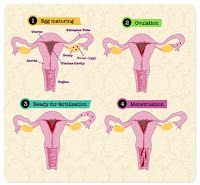
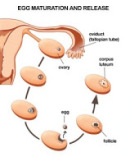
But during this phase also, they may suffer from one or the other problems for which high doses of hormones may be prescribed by conventional medicine. But considering their deep action, many of us worry about the possible side effects due to these hormones. On the contrary, homeopathic treatment enables them to find a balanced menstrual cycle without having undue pressure on any other organ.
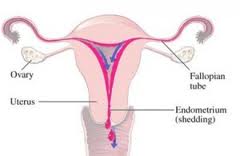
1. Menstrual disorders
A. Delayed puberty/Late menarche
Puberty is described as delayed puberty with exceptions when an organism has passed the usual age of onset of puberty with no physical or hormonal signs that it is beginning. Puberty may be delayed for several years and still occur normally, in which case it is considered constitutional delay, a variation of healthy physical development. Delay of puberty may also occur due to malnutrition, many forms of systemic disease, or to defects of the reproductive system (hypogonadism) or the body’s responsiveness to sex hormones. In girls, no breast development by 13 years, or no menarche by 3 years after breast development (or by 16)

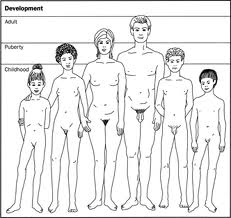
B. Irregular menses– (Metrorrhagia)
Metrorrhagia (metro = womb, -rrhagia = excessive flow is uterine bleeding at irregular intervals, particularly between the expected menstrual periods.
In some women, menstrual spotting between periods occurs as a normal and harmless part of ovulation. Some women experience acute mid-cycle abdominal pain around the time of ovulation. This may also occur at the same time as menstrual spotting. The term breakthrough bleeding or breakthrough spotting is usually used for women using hormonal contraceptives, such as IUDs or oral contraceptives, in which it refers to bleeding or spotting between any expected withdrawal bleedings, or bleeding or spotting at any time if none is expected. Metrorrhagia may also be a sign of an underlying disorder, such as hormone imbalance, endometriosis, uterine fibroids, or cancer of the reproductive organs.Due to repeated bleeding, it may cause significant iron deficiency anemia.
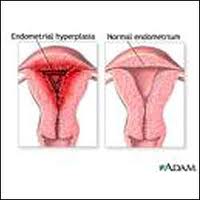
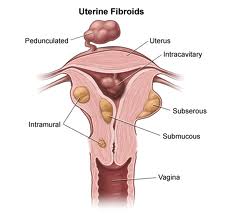
C. Profuse menses– (menorrhagia)
Menorrhagia is an abnormally heavy and prolonged menstrual period at regular intervals. Menorrhagia can be caused by abnormal blood clotting, disruption of normal hormonal regulation of periods, or disorders of the endometrial lining of the uterus. Depending upon the cause, it may be associated with abnormally painful periods (dysmenorrhea).
A normal menstrual cycle is 25–35 days in duration, with bleeding lasting an average of 5 days and total blood flow between 25 and 80 mL. A blood loss of greater than 80 ml or lasting longer than 7 days constitutes menorrhagia (also called hypermenorrhea).
Most common cause includes blood disorder or stress-related disorders.
D. Scanty menses– Oligomenorrhea
Oligomenorrhea) is infrequent (or, in occasional usage, very light) menstruation. More strictly, it is menstrual periods occurring at intervals of greater than 35 days, with only four to nine periods in a year. Also, menstrual periods should have been regularly established previously before the development of infrequent flow. The duration of such events may vary.
Causes of Oligomenorrhea can be a result of prolactinoma, thyrotoxicosis, hormonal changes in perimenopause, Prader–Willi syndrome, and Graves’s disease. “Endurance exercises such as running or swimming can affect the reproductive physiology of women athletes, Breastfeeding has also been linked to irregularity of menstrual cycles due to hormones which delay ovulation.
Women with polycystic ovary syndrome (PCOS) are also likely to suffer from oligomenorrhea. Eating disorders can also result in oligomenorrhea.
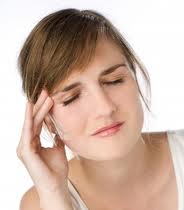
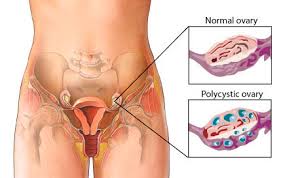
E.Amenrrhoea or absence of menses
Amenorrhoea is the absence of a menstrual period in a woman of reproductive age. Physiological states of amenorrhoea are seen during pregnancy and lactation (breastfeeding), the latter also forming the basis of a form of contraception known as the lactational amenorrhoea method. Outside of the reproductive years there is absence of menses during childhood and after menopause.
Amenorrhoea is a symptom with many potential causes. Primary amenorrhoea (menstruation cycles never starting) may be caused by developmental problems such as the congenital absence of the uterus, failure of the ovary to receive or maintain egg cells, and genetic diseases such as 5-alpha-reductase deficiency which causes one to be intersex. Also, delay in pubertal development will lead to primary amenorrhoea. It is defined as an absence of secondary sexual characteristics by age 14 with no menarche or normal secondary sexual characteristics but no menarche by 16 years of age. Secondary amenorrhoea (menstruation cycles ceasing) is often caused by hormonal disturbances from the hypothalamus and the pituitary gland, from premature menopause or intrauterine scar formation. It is defined as the absence of menses for three months in a woman with previously normal menstruation or nine months for women with a history of oligomenorrhoea.
Homeopathic Approach to Irregular Menses:
Homeopathy offers an extensive range of options than conventional medicine. Homeopathic treatment for Irregular Menstruation is very competent, non-invasive, safe and inexpensive. Homeopathy treats the patient as a whole and looks deeper into the problem, promotes the immune function and maintains uterine health by eliminating the causative factor. Homeopathic Constitutional treatment based on the holistic approach stimulates the natural hormonal balance without administering any harmful hormone preparations. The goal of this Homeopathic approach is to enliven the body’s natural healing and self-repair ability to treat the underlying condition, to prevent it and to create the highest state of health and well-being.
Constitutional Homeopathic treatment with the management of an experienced and professional Homeopath is an excellent choice for Irregular Menstruation. Some Homeopathic remedies that are commonly used to treat Menstrual Irregularities are given below. These are just a few of the commonly used Homeopathic remedies and are mentioned only to create awareness about the effectiveness of Homeopathic medicines in Menstrual Irregularity. It is not advisable to resort to self-medication for any disease.
Self-care measures for Irregular Menses:
- Relax and ease stress.
- Avoid exhausting physical exercise.
- Eliminate any eating disorders.
- Eat a balanced diet with lots of fresh fruits and vegetables.
- Reduce your intake of salt and caffeine.
Hence, appreciate a natural way to a healthy uterus, convalesce healthy living and curtail the changes that happen during your menstrual years.
2. Dysmenorrhoea/Menstrual cramps
What are menstrual cramps?
Menstrual cramps are pains in the belly and pelvic areas that are experienced by a woman as a result of her menstrual period. Menstrual cramps are not the same as the discomfort felt during premenstrual syndrome (PMS), although the symptoms of both disorders can sometimes be experienced as a continual process. Many women suffer from both PMS and menstrual cramps.
How common are menstrual cramps?
Menstrual cramps of some degree affect more than an estimated 50% of women, and among these, up to 15% would describe their menstrual cramps as severe. Surveys of adolescent girls show that over 90% of girls report having menstrual cramps.
What is dysmenorrhea?
The medical term for menstrual cramps is dysmenorrhea. There are two types of dysmenorrhea, primary and secondary.
In primary dysmenorrhea, there is no underlying gynecologic problem causing the pain. This type of cramping may begin within six months to a year following menarche (the beginning of menstruation), the time when a girl starts having menstrual periods. Menstrual cramps typically do not begin until ovulatory menstrual cycles (when an egg is released from the ovaries) occur, and actual menstrual bleeding usually begins before the onset of ovulation. Therefore, an adolescent girl may not experience dysmenorrhea until months to years following the onset of menstruation.
In secondary dysmenorrhea, some underlying abnormal condition (usually involving a woman’s reproductive system) contributes to the menstrual pain. Secondary dysmenorrhea may be evident at menarche but, more often, the condition develops later.
What causes menstrual cramps?
Each month, the inner lining of the uterus (the endometrium) normally builds up in preparation for a possible pregnancy. After ovulation, if the egg is not fertilized by a sperm, no pregnancy will result, and the current lining of the uterus is no longer needed. The woman’s estrogen and progesterone hormone levels decline, and the lining of the uterus becomes swollen and is eventually shed as the menstrual flow and is replaced by a new lining in the next monthly cycle.
When the old uterine lining begins to break down, molecular compounds called prostaglandins are released. These compounds cause the muscles of the uterus to contract. When the uterine muscles contract, they constrict the blood supply (vasoconstriction) to the endometrium. This contraction blocks the delivery of oxygen to the tissue of the endometrium which, in turn, breaks down and dies. After the death of this tissue, the uterine contractions literally squeeze the old endometrial tissue through the cervix and out of the body by way of the vagina. Other substances known as leukotrienes, which are chemicals that play a role in the inflammatory response, are also elevated at this time and may be related to the development of menstrual cramps.
What other factors influence menstrual cramps?
- As mentioned above, an unusually narrow cervical canal tends to increase menstrual cramps.
- Another anatomical factor thought to contribute to menstrual cramps is a backwards tilting of the uterus (a retroverted uterus).
- Lack ofexercise is now recognized to contribute to painful menstrual cramps.
- It has long been thought that psychological factors also play a role. For example, it is widely accepted that emotional stresscan increase the discomfort of menstrual cramps.
Treatment in conventional system
Most of the conventional modes of treatment aim to palliate the pain rather than curing the cause behind it.
HOMEOPATHIC APPROACH
Homeopathy being an individualistic science tries to find an individual remedy for each case. Different females suffering from Dysmenorrhoea present with different symptoms regarding the character, localization, extension and severity of pain most importantly the disposition and mental state of each person is different. A female reproductive system releases various hormones for its normal functioning which are further controlled by hormones released by brain. Any past or prevailing stress, grief, anxiety, fear etc lead to an imbalance in normal hormonal regulation. Hence a Homeopathic remedy is selected by considering the physical, mental and emotional state of each person in order to cure safely and effectively.
